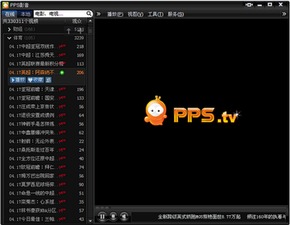linux vps 启动不起来 最后一行显示 kernel panic - not symcing:attemp

。
vps底板有假货吗
vps底板有假货。
辨别方法:
1、VPS是虚拟操作系统技术,当你进VPS后,在屏幕右上角会有绿色的VPSID出现,如VPS101;
2、进入刚建的WINDOWSVPS时,系统占用资源是60M左右,刚建好的VPS仅占用100M左右的硬盘资源,而使用VM划分的虚拟机则是要用到3个G左右的资源; 也就是说如果你买一台虚拟机,如果是5G硬盘的话你只能用到1G左右,而你买一台VPS虚拟独享服务器的话,5G硬盘你基本能完全用到;
3、在VPS内部,运行uname_a命令查找内核。如果能看到2.6.9-023stab033.9和MSK类似的字样,则表示这是Virtuozzo的VPS。 在VPS上执行rpm_qa|grepkernel,将不会列出任何信息,如果出现,说明不是VPS;
4、Virtuozzo的VPS使用VZFS文件系统,并且无SWAP分区; Virtuozzo开通的VPS是具有一定资源限制的虚拟分区,可在VPS内执行命令cat/proc/user_beancounters查看VPS的资源使用情况,如报告找不到文件,说明不是VPS
vps主机与虚拟机有什么区别?
VPS和虚拟主机的区别
如何辨认vps真假
1、VPS是虚拟操作系统技术,当你进VPS后,在屏幕右上角会有绿色的VPSID出现,如VPS101;
2、进入刚建的WINDOWSVPS时,系统占用资源是60M左右,刚建好的VPS仅占用100M左右的硬盘资源,而使用VM划分的虚拟机则是要用到3个G左右的资源;
也就是说如果你买一台虚拟机,如果是5G硬盘的话你只能用到1G左右,而你买一台VPS虚拟独享服务器的话,5G硬盘你基本能完全用到;
3、在VPS内部,运行uname–a命令查找内核。如果能看到2.6.9-023stab033.9和MSK类似的字样,则表示这是Virtuozzo的VPS.
在VPS上执行rpm–qa|grepkernel,将不会列出任何信息,如果出现,说明不是VPS;
4、Virtuozzo的VPS使用VZFS文件系统,并且无SWAP分区;
5、Virtuozzo开通的VPS是具有一定资源限制的虚拟分区,可在VPS内执行命令cat/proc/user_beancounters查看VPS的资源使用情况,如报告找不到文件,说明不是VPS。
SWsoft官方的VPS辨别方式电子书:
http://www.swsoft.com.cn/downloads/Virtuozzo/VPS_vs_VMware.pdf
打算在vps上装FreeBSD,需要定制内核吗
一、 编译内核的必要性1. 减少启动时间。常规内核的启动要浪费很多时间在检测不必要的硬件上。2. 减少运行时的内存消耗。不必要的系统支持不用加载。3. 增加一些缺省不支持的特性(kernel option)。
如何查看当前vps的虚拟化技术
Update:You may be interested in [[the perl module|perl-module-for-virtualization-detection]] implementing these tricks.
Frequently,our customerswant to install our software in a virtual machine. This can be OK, but frequently they hit a CPU, memory, or IO limit caused by running in a constrained virtual environment. When this happens, we really like to know if they're running under virtualization when we try to support them. Here's some tricks to detect, from a shell, if the system is virtualized.
The first thing to check is dmesg. On a recently-booted system, checking the 'dmesg' command output may be sufficient. Otherwise, try "cat /var/log/dmesg" instead of "dmesg"
VMWare:
#dmesg|grep-ivirtualVMwarevmxnetvirtualNICdriverVendor:VMwareModel:VirtualdiskRev:1.0hda:VMwareVirtualIDECDROMDrive,ATAPICD/DVD-ROMdriveQEmu or KVM:
If the "-cpu host" option has not been used, QEmu and KVM will identify themselves as:
#dmesg|grep-ivirtualCPU:AMDQEMUVirtualCPUversion0.9.1stepping03otherwise, the host's CPU information will be used both in dmesg, or in /proc/cpuinfo.
However, you should see something like:
$dmesg|grep-ivirtual[0.000000]BootingparavirtualizedkernelonKVMon newer kernels that understand that they're running under paravirtualization. (Thanks toRené Pfeifferfor pointing this out)
Microsoft VirtualPC:
#dmesg|grep-ivirtualhda:VirtualHD,ATADISKdrivehdc:VirtualCD,ATAPICD/DVD-ROMdriveXen (thanks,wardiand others)
#dmesg|grep-ixenXenvirtualconsolesuccessfullyinstalledastty1Virtuozzo
#dmesg(returnsnooutput)#cat/var/log/dmesg(returnsnooutput)#ls-al/proc/vzveinfoveinfo_redirveredirvestatvzaquotavzdataOn longer-running systems, you may need to grep /var/log/dmesg instead.
If that doesn't produce anything useful, try using dmidecode to look at the BIOS information. Frequently, there will be at least one component identifying itself as virtualized:
VMWare:
#dmidecode|egrep-i'manufacturer|product'Manufacturer:VMware,Inc.ProductName:VMwareVirtualPlatformMicrosoft VirtualPC:
#dmidecode|egrep-i'manufacturer|product'Manufacturer:MicrosoftCorporationProductName:VirtualMachineQEMU or KVM:
#dmidecode|egrep-i'vendor'Vendor:QEMUVirtuozzo:
#dmidecode/dev/mem:PermissiondeniedXen:
#dmidecode|grep-idomUProductName:HVMdomUYou should just examine the output of dmidecode directly rather than trying to grep as above, in case the output changes. QEMU, for example, doesn't report the vendor in all versions.
Next, check disk devices for identification as virtualized:
VMWare:
#cat/proc/ide/hd*/modelVMwareVirtualIDECDROMDrive#cat/proc/scsi/scsiAttacheddevices:Host:scsi0Channel:00Id:00Lun:00Vendor:VMwareModel:VirtualdiskRev:1.0Type:Direct-AccessANSISCSIrevision:02Microsoft VirtualPC:
#cat/proc/ide/hd*/modelVirtualHDVirtualCDQEMU, KVM, or Xen:
#cat/proc/ide/hd*/modelQEMUHARDDISKQEMUDVD-ROMVirtuozzo:
#ls-al/dev/vzfsb-----x---1rootroot0,192009-04-0615:04/dev/vzfsIf you've got tips for other virtualized environments, let me know and I'll add them to the list.
